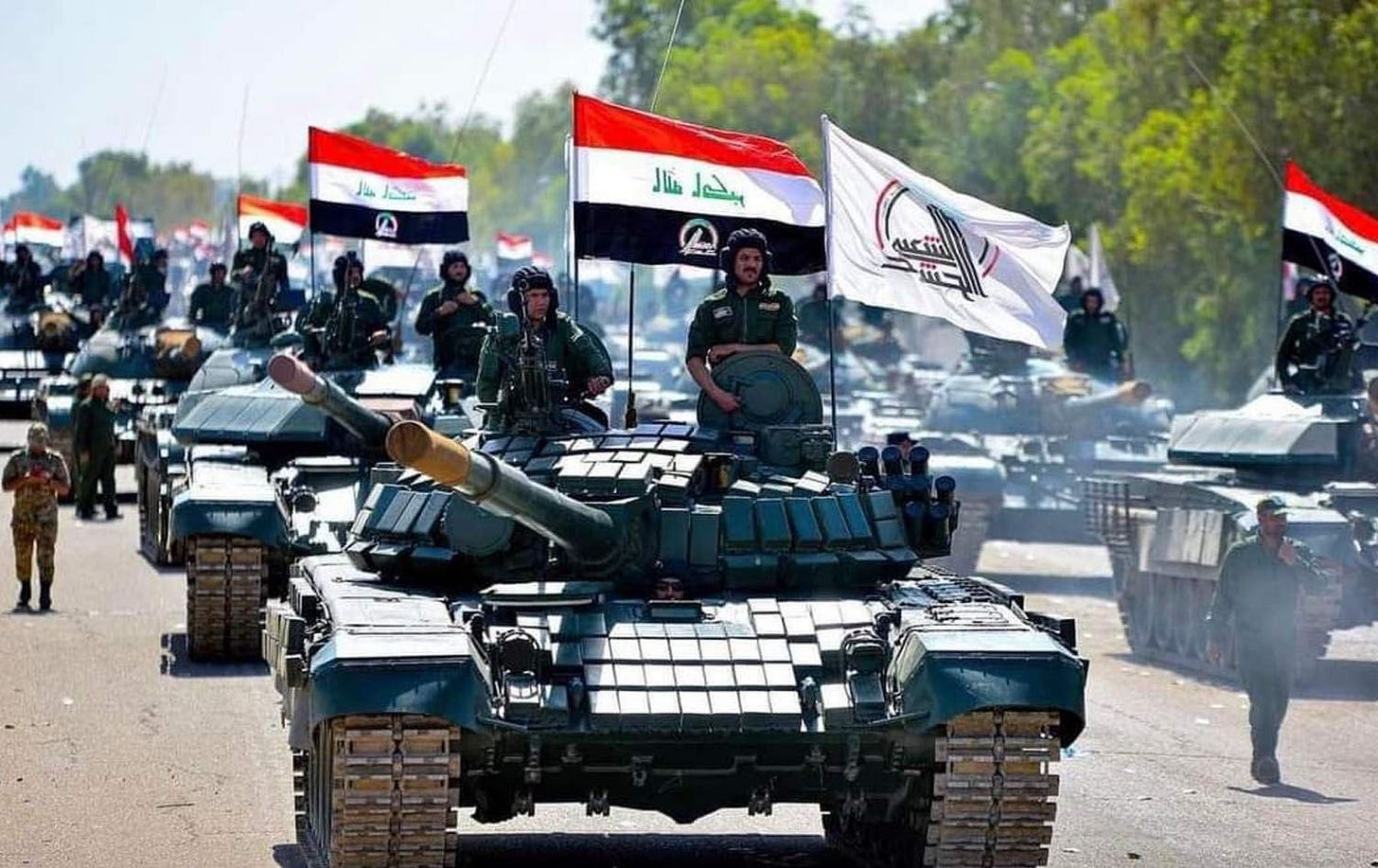Avoiding the “Sudan Scenario" in Iraq
Recent Iraqi efforts to integrate the Popular Mobilization Forces risks a conflict similar to the ongoing war in Sudan.

In late February, the Iraqi Council of Ministers approved a new legislation aimed at integrating the paramilitary group Popular Mobilization Forces (PMF) into the broader Iraqi security apparatus.
Titled the “PMF Service and Retirement Law,” the legislation was submitted to the Iraqi Parliament at the end of March and has since been under review.
According to The National, the bill’s primary provision grants the PMF chairman the rank of minister and a seat on the National Security Council.
According to Rudaw, other provisions include a mandatory retirement age of 60 for PMF fighters, a prohibition on PMF members engaging in political parties, and the establishment of a designated military academy called the Popular Mobilization Forces Academy.
The PMF was initially formed in 2014 following a fatwa (religious ruling) by Grand Ayatollah Ali al-Sistani, which called on Shia Iraqis to take up arms against the Islamic State.
Over time, the PMF grew to encompass pro-Iranian militias such as Kataib Hezbollah. The paramilitary group has since become a key vehicle for Iran’s power projection in Iraq.
The legislation is a response to growing domestic and international pressure to curb Iranian influence in the country.
Yet, if the war in Sudan—sparked by a similar integration attempt—is any indication, the legislation may not yield the stability the international community is hoping for.
The ongoing war in Sudan—often described as the world’s worst humanitarian crisis—erupted in April 2023 following a power struggle between the Sudanese Armed Forces (SAF) and the paramilitary group Rapid Support Forces (RSF).
Although the RSF agreed in principle to integrate into the SAF, the two forces disagreed over the timeline for this process. As negotiations collapsed, armed conflict broke out, culminating in the devastating war that continues today.
The PMF law in Iraq risks a similar outcome, potentially entrenching a power struggle deep in Baghdad. But Iraq is not Sudan. It sits atop some of the world’s largest oil reserves, borders states critical to U.S. Middle East policy—including both Iran and Saudi Arabia—and is even more religiously diverse. Another collapse in Iraq could trigger a wave of regional instability not seen since the U.S. invasion in 2003.
In particular, the law risks inflaming tensions between Iraqi Shia nationalists—those who support an Iraq free of Iranian interference, such as al-Sistani—and pro-Iranian Shia factions, who advocate for closer ties with Tehran. The last time tensions between these camps reached a boiling point was during the 2019 Tishreen Movement, when predominantly young Shia Iraqis protested en masse for reforms and Iraqi sovereignty from Iran.
These tensions were evident at the end of February, when, following the passage of the legislation, PMF Chairman Falih al-Fayyadh flew to Tehran to meet with senior Iranian officials—likely in a bid to secure backing amid the uncertainty surrounding the law.
Any new armed conflict that might erupt from this law would stand in stark contrast to Iraq’s civil war in the 2000s. That conflict was a straightforward, largely sectarian armed dispute, pitting Sunnis against Shias. This time, the lines could be drawn within the Shia community itself, potentially drawing in other factions—such as Sunnis and Kurds—and making for a far messier and more complex war.
Today, Iraq finds itself as “the last card on the table” in a newly evolving Middle Eastern order—amid Iran’s declining influence, rapprochement between Turkey and the Gulf, and the fall of Bashar al-Assad’s regime.
For this reason, any outbreak of violence in Iraq will most surely draw in external powers. While Iran would continue to back the PMF, Turkey and the Gulf states could support factions opposed to the paramilitary, including Shia nationalists, despite being Sunni-majority nations.
In Sudan’s case, the SAF focused solely on the timeline of the RSF’s integration rather than addressing the structure and oversight mechanisms—paving the way for today’s war. Iraq, by contrast, is already in a stronger position, with 18 specific provisions laid out in the PMF legislation.
Still, that won’t be enough, given the complex web of foreign interests in Iraq. Baghdad should look to a neutral third party to mediate tensions during the integration process. Regionally, the most viable option is Oman. The Gulf state played a pivotal role in brokering the 2023 restoration of diplomatic relations between Saudi Arabia and Iran and more recently helped secure a ceasefire between the United States and the Houthis in Yemen.
Oman has proven itself a capable and trusted mediator, able to navigate Middle Eastern hostilities and manage regional rivalries. The Sultanate could oversee Iraq’s PMF integration process, balancing the concerns of all involved actors.
Of course, Iraq’s future is not predetermined. The integration of the PMF into the Iraqi security sector will take time, involving revisions to the law and ongoing dialogue among policymakers. New developments could steer Iraq away from instability, even if the risks remain high. But amid the regional turmoil sparked by the Gaza war, the Middle East cannot afford another failed state—especially when the threat of the Islamic State still lingers.




